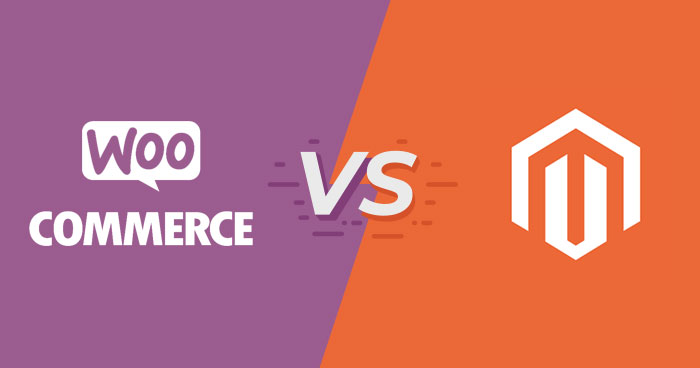How to Convert Leads at the Decision Stage of the Funnel: The Ultimate Guide to Closing More Sales
At the decision stage of your sales funnel, potential customers are on the verge of making a purchase.They’ve recognized their problem, researched potential solutions, and narrowed down their options—possibly with your business in the mix. This critical juncture represents the culmination of your marketing efforts and the final hurdle before turning a prospect into a paying customer.
Yet many businesses fumble at this crucial moment. They’ve invested heavily in awareness and consideration stage tactics, only to watch qualified leads slip through their fingers just before conversion. The truth? Converting decision-stage leads requires a distinct approach that acknowledges their unique position in the buyer’s journey.
In this comprehensive guide, we’ll explore proven strategies that can significantly boost your conversion rates at the decision stage, ultimately improving your ROI and growing your business. From email marketing techniques to social proof implementation, CTA optimization to targeted keyword strategies—we’ll cover everything you need to know to close more deals with leads who are already primed to buy.
Understanding Buyer Intent at the Decision Stage
The decision stage marks a fundamental shift in buyer psychology. Unlike earlier funnel stages where prospects are information-gathering and option-weighing, decision-stage leads are actively preparing to make a purchase. “At this point, they’re no longer questioning whether they need a solution like this.”but rather “Which solution should I choose?” and “Is this particular option right for me?”
Sarah Johnson, conversion optimization specialist at ConversionIQ, explains: “At the decision stage, prospects have entirely different needs than they did just days or weeks earlier. They’re looking for confirmation that they’re making the right choice, specific details about implementation, and final reassurances about value.”
This shift in mindset manifests in several observable behaviors:
– Repeated visits to pricing pages
– Detailed product comparison research
– Engagement with case studies and testimonials
– Increased time spent viewing product demonstrations
– Direct inquiries about implementation and onboarding
– Requests for personalized quotes
To effectively convert these leads, your strategy must address their heightened scrutiny and specific concerns. Decision-stage prospects need final reassurance, clear differentiation from competitors, and a frictionless path to purchase.
Remember, these leads have already invested time researching solutions. They’re not looking to be educated on the problem—they need convincing that your specific solution is the answer. The stakes are high: according to research from Gartner, a well-executed decision-stage strategy can increase conversion rates by 30-50% compared to generic approaches.
Let’s explore how to craft this targeted strategy across various channels and tactics.
Email Marketing Strategies for Decision-Stage Conversions
Email remains one of the most effective channels for nurturing decision-stage leads, offering personalized communication at scale. When prospects are nearing a purchase decision, strategic email sequences can provide that final nudge toward conversion.
Personalized Follow-Ups That Address Specific Concerns
Mass email campaigns fall short when customers are close to making a decision. Your communications should reflect the prospect’s specific interests, behaviors, and potential objections.
Consider a software company that notices a prospect has visited their enterprise pricing page three times in the past week. An effective follow-up email might say:
“I saw you’ve been checking out our enterprise offerings lately.”Many of our enterprise clients initially had questions about implementation timelines and team training. Would you find it helpful if I shared some insights on how companies similar to yours have successfully onboarded our platform in under two weeks?”
This approach demonstrates attentiveness while addressing common concerns that might be preventing conversion.
Cart Abandonment Campaigns With Progressive Incentives
For e-commerce businesses, abandoned carts represent decision-stage leads who came tantalizingly close to conversion. A strategic re-engagement sequence might include:
1. Initial reminder (1 hour after abandonment): “Your selected items are still waiting for you.”
2. Value reinforcement (24 hours later): “Here’s why our customers love these products…” featuring testimonials specific to the abandoned items.
3. Objection handling (48 hours later): “We offer free returns within 30 days if it’s not the perfect fit.”
4. Incentive (72 hours later): “Complete your purchase today with this 10% discount code.”
The progressive approach addresses different potential barriers to purchase rather than immediately jumping to discounts, which can train customers to abandon carts intentionally.
Time-Sensitive Offers That Create Urgency
Decision-stage prospects often need a compelling reason to act now rather than continuing their comparison shopping. Limited-time offers create this urgency without appearing manipulative when presented transparently.
For example, a B2B software company might email: “As we discussed, the annual plan would be ideal for your implementation timeline. If you’re still considering this option, our fiscal quarter ends this Friday, and we’re offering an additional 3 months free to contracts signed before then.”
This approach creates legitimate urgency while still providing genuine value.
Email Automation That Responds to Buying Signals
Smart email sequences can respond dynamically to prospect behavior, sending different content based on engagement signals:
– If a prospect downloads a comparison guide: Send a follow-up email highlighting your unique advantages over competitors specifically mentioned in the guide.
– If they view customer stories: Share additional case studies from similar businesses or industries.
– If they attend a product demonstration: Follow up with answers to frequently asked post-demo questions.
Marketing automation platforms make this level of personalization achievable without requiring manual intervention for each lead. The key is setting up trigger-based workflows that respond to specific decision-stage behaviors.
Importantly, decision-stage email marketing requires restraint. These prospects are closer to purchase, but overwhelming them with daily communications can backfire. Focus on quality over quantity, with two to three highly relevant emails per week maximum.
Leveraging Product Reviews and Testimonials
When prospects reach the decision stage, they’re actively looking for confirmation that they’re making the right choice. Product reviews and testimonials provide powerful social proof that can tip the scales in your favor.
Strategic Placement of Social Proof
Reviews and testimonials should be prominently featured at key decision points throughout your website:
– Product pages: Display star ratings and review counts prominently near the product name and price
– Checkout pages: Include reassuring testimonials focused on ease of use and satisfaction
– Pricing tables: Feature quotes from customers highlighting ROI and value
– Landing pages: Showcase industry-specific testimonials relevant to the visitor’s segment
The mortgage broker Streamline Lending increased conversions by 26% simply by moving client testimonials from a dedicated page to strategically placed sections on their application funnel.
Collecting High-Impact Testimonials
Not all testimonials are created equal. Decision-stage leads are looking for specific reassurances, so solicit testimonials that address common concerns:
1. Request specificity: Ask customers to mention specific results, like “Our conversion rate increased by 32% within two months.”
2. Capture before/after scenarios: “Before implementing this solution, we struggled with X. Now, we’re experiencing Y.”
3. Include relevant context: Encourage customers to share their industry, company size, or other details that help prospects see themselves in the testimonial.
4. Address common objections: “I was concerned about the implementation timeline, but the onboarding team made it surprisingly smooth.”
Video testimonials are particularly powerful at the decision stage, as they add authenticity that written reviews sometimes lack. A simple 30-second testimonial from a satisfied customer can outperform lengthy written reviews.
Review Management for Maximum Impact
How you manage and display reviews can significantly influence their effectiveness:
– Feature a mix of ratings: While it might seem counterintuitive, displaying exclusively 5-star reviews can actually reduce credibility. Including some 4-star reviews with constructive feedback demonstrates authenticity.
– Respond to negative reviews: Your responses to critical feedback often matter more than the review itself. Decision-stage prospects are watching how you handle criticism.
– Update regularly: Fresh reviews signal an active, engaged customer base. Implement systems that regularly solicit new reviews from satisfied customers.
– Highlight industry-specific feedback: Enable filtering of reviews by industry or use case to help prospects find the most relevant social proof.
Lisa Mortensen, conversion specialist at OptimizeNow, notes: “Reviews are most impactful when they mirror the prospect’s own situation. A software buyer at a healthcare company will be far more influenced by testimonials from other healthcare organizations than by generic praise.”
Review Widgets and Third-Party Validation
When possible, incorporate third-party review platforms rather than relying exclusively on self-published testimonials:
Google Rating Badges: Showcase your overall star rating and total reviews from your Google Business Profile.- Industry-specific review platforms: For B2B companies, include ratings from platforms like G2, Capterra, or TrustRadius
Trust Symbols: Highlight certifications, industry recognitions, and security seals to boost shopper confidence.
These third-party validations carry additional weight with skeptical decision-stage prospects who might question the authenticity of testimonials published directly on your site.
Using Social Proof and Case Studies
While testimonials offer quick reassurance, comprehensive case studies provide the detailed evidence that decision-stage prospects often need before committing. These in-depth success stories allow potential customers to envision similar outcomes for their own situation.
Creating Compelling Case Studies
Effective case studies follow a narrative structure that resonates with decision-stage leads:
1. Challenge: Describe the customer’s situation before implementing your solution, focusing on pain points your prospect likely shares.
2. Solution: Explain how your product or service addressed these challenges, highlighting features relevant to your decision-stage lead.
3. Implementation: Detail the onboarding process, timeline, and any potential disruptions—often a key concern for prospects.
4. Results: Provide specific, measurable outcomes with concrete numbers whenever possible.
5. Future outlook: Show how the customer continues to benefit from your solution.
When cloud accounting software FreshBooks revamped their case study format to include specific implementation details and ROI metrics, their case study page conversion rate increased by 38%.
Segment-Specific Success Stories
Decision-stage prospects respond most strongly to case studies featuring businesses similar to their own. Develop a collection of case studies categorized based on:
– Industry vertical
– Company size
– Specific use case
– Geography (when relevant)
– Primary challenge addressed
This segmentation allows you to direct prospects to the most relevant success stories based on their specific situation.
Leveraging User-Generated Content
Beyond formal case studies, authentic user-generated content can powerfully influence decision-stage prospects:
– Social media mentions: Display a curated feed of positive mentions from social platforms
– Customer photos/videos: Show real customers using your product in authentic settings
– Community engagement: Highlight active user communities or forums where prospects can see genuine customer interactions
Fitness equipment manufacturer Peloton effectively uses Instagram content from real users showing their at-home workout setups, creating authentic social proof that professional photography couldn’t achieve.
Influencer Endorsements and Client Logos
Strategic partnerships with respected industry figures or organizations provide additional validation:
Showcase well-known client logos (with approval) to establish credibility and build trust with new visitors.
– Include quotes from industry analysts or thought leaders
– Showcase partnerships with respected organizations in your industry
When displaying client logos, group them strategically rather than showing a random assortment. For example, a software company might display separate sections for “Enterprise Clients,” “Healthcare Organizations,” and “Financial Institutions,” allowing prospects to quickly identify with relevant segments.
Decision-Stage Keyword Optimization
At the decision stage, prospect search behavior changes dramatically. They use more specific, purchase-oriented terms that signal buying intent. Optimizing for these bottom-of-funnel (BOFU) keywords can attract highly qualified traffic that’s ready to convert.
Identifying Decision-Stage Keywords
Decision-stage keywords typically include:
1. Branded comparison terms: “[Your brand] vs [Competitor],” “[Your brand] alternatives”
2. Purchase intent modifiers: “buy,” “pricing,” “cost,” “discount,” “demo,” “trial”
3. Review-seeking terms: “best reviews,” “top-rated [service]”
4. Specific feature inquiries: “[specific feature] software,” “platform with [capability]”
5. Implementation questions: “ implementation guide,” “how to set up ”
Using keyword research tools, identify which decision-stage terms have the highest volume and lowest competition in your industry. Prioritize these for content creation and optimization.










